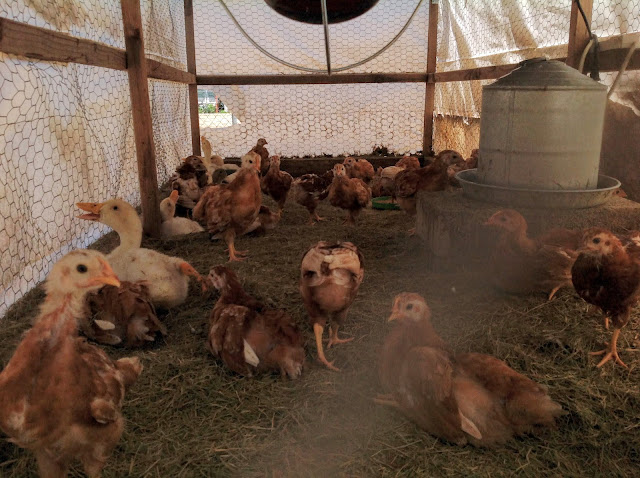How-to: Introducing New Chickens into an Existing Flock
The time has come this year to start integrating the used-to-be-chicks with the adult chickens. So, in other words, I have to mix younger chickens in with older chickens.
You might think that the process involved in mixing the two age groups is as simple as adding 2 plus 2, and believe me, I wish it were that simple!
Chickens have a thing called "pecking order." By introducing new chickens, that existing pecking order gets disrupted while the new chickens (who also have a pecking order) are being vertically integrated (up or down) into the system. About 9.98 times out of 10, all the new chickens end up at the very bottom of the pecking order, mostly because they are a bit smaller than the adult chickens. However, the good news is that after a few days (up to a week), every chicken knows their place and they all get along fine (for the most part).
Now that we have established that there are two pecking order's being mixed, lets talk about HOW they get mixed. It's never the best idea to just put both parties of chickens together without any previous contact (that would be like putting a curling iron into a bathtub; someone's going to get shocked). You see, chickens aren't like people. They do not hide their feelings of dislike or hatred of another chicken, they just "let it out." Any new arrival to the chicken house causes the existing chickens to feel threatened, which can lead to all out war in some cases. For that reason, its always a good idea to keep the new arrivals in a separate pen that allows the other chickens to socialize (ie, get to know) with the new arrivals. Allowing previous contact (ideally an exposure of at least a week, although longer is even better) makes the new arrivals look less threatening, although some fighting/pecking will still ensue because the new pecking order couldn't have been established "between bars."
Congratulations! You now can say that you know something about chicken behavior and psychology!


Comments
Post a Comment